One of the most anticipated destinations of the summer were the Islands of the Gods as the ancient Romans called them or as Islas Cíes as they are better known nowadays; Illas Cíes in Galician language. These three islands, northernmost Monteagudo, middle Illa do Faro and southernmost called just southern island or Illa de San Martiño together provide six kilometer long barrier to the bay of Vigo for sheltering it from the Atlantic swell. The islands of Cíes are declared as nature reserves starting from 1980. No cars, no bikes and no hotels, only tranquility and rich nature with various plants and birds. There is no need to travel to the Caribbean, there are amazing white sandy beaches with crystal clear water in our own beautiful Europe – we wanted to visit there indeed, but no so fast!
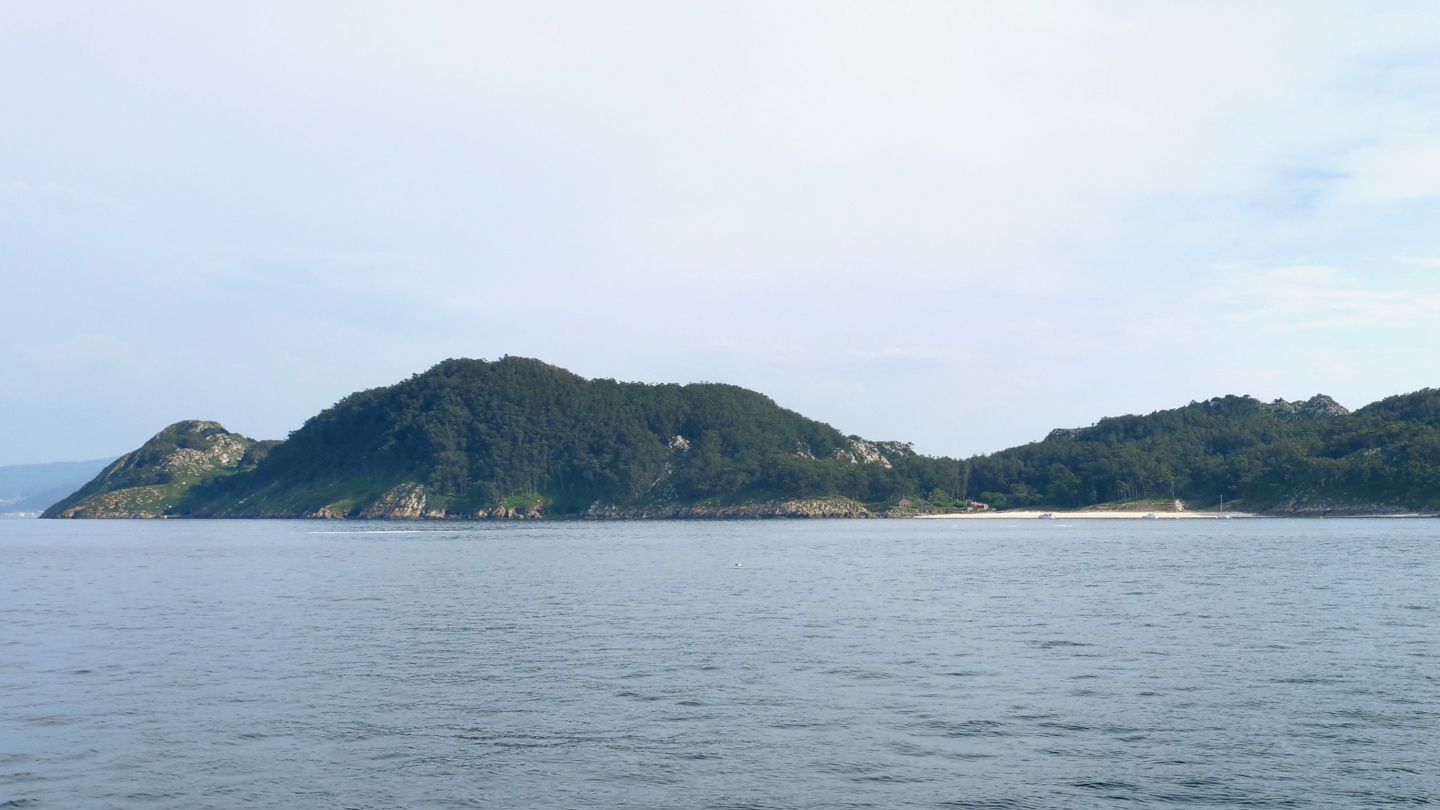
The islands of Galicia are forming a natural reserve with restricted access. Both the sailing in the area and anchoring require its own permit. At first, we had to get the navigation permit that allows us to enter the natural reserve with either sailboat or motorboat. The application was filled online and we had to provide the copy of International Certificate of Competence (ICC = boater’s driving license), ID-card and boat’s registration document. We had already applied for navigation permit earlier in the winter. It arrived within two days and is valid for two years at a time. Bundled with the permit was a password for accessing Galician Atlantic Islands Maritime Authority website where we could apply for an anchoring permit. The latter is required if we plan to anchor with anything bigger than kayak in the nature reserve area..
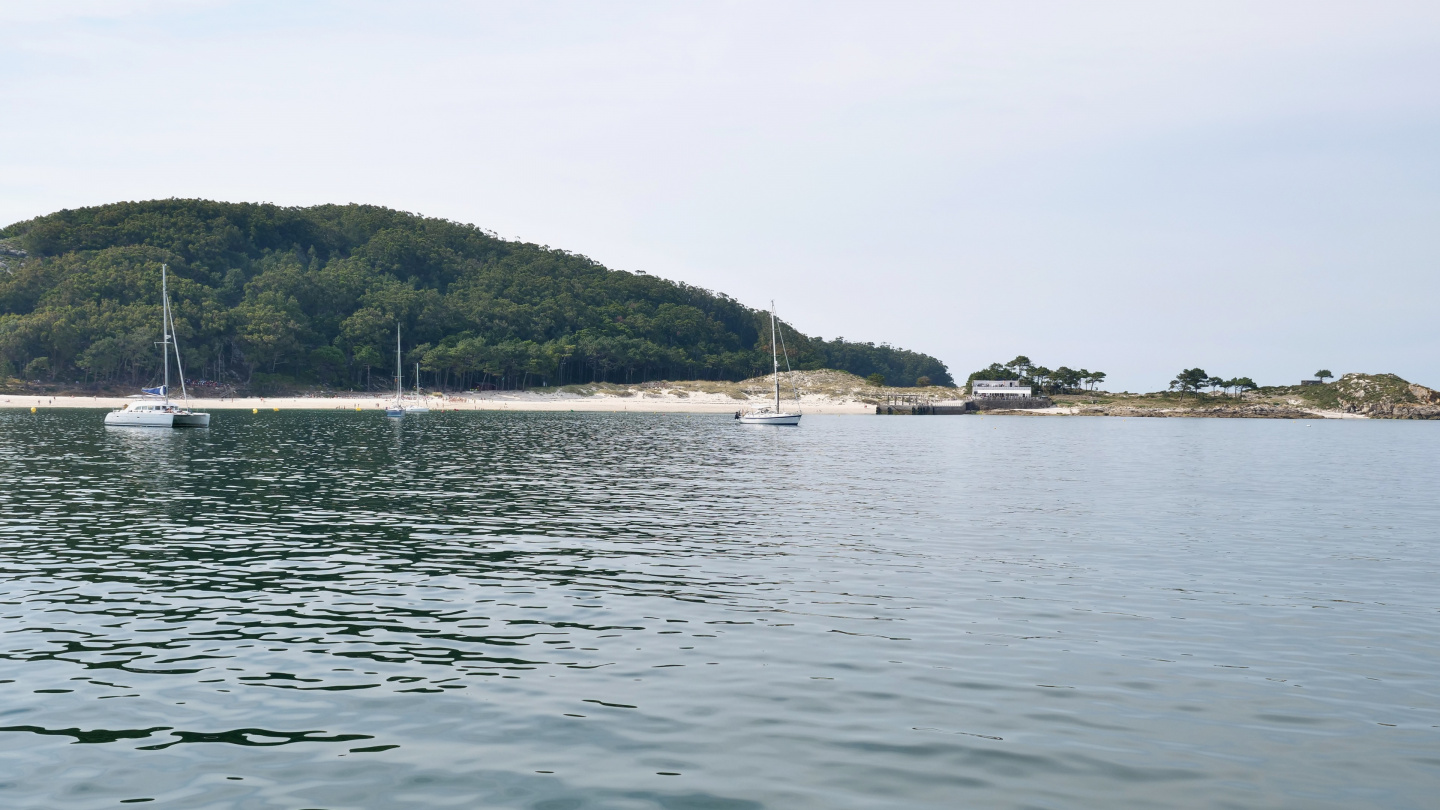
There are a limited number of daily anchoring permits granted and the biggest demand is during the holiday season in July – August and at weekends. Holidaymakers on Thursday might find out that there are no more permits available for this Friday. We were applying outside of the main holiday season, thus the permit arrived instantly for next day. After all the midsummer solstice party is coming this weekend and celebration in scenic islands got us very excited. Both permits need to be printed and presented to authorities patrolling in the area upon request. Whole process is free of charge and can easily be done at https://iatlatnicas.es web page that is also translated in English.
Weather forecast was showing only light winds. There were no wind at the bay of Vigo at all and the nine nautical mile sailing was replaced by motoring. This did not bother us at all, amazing heat wave was continuing and the Sun was smiling from the deep blue sky.
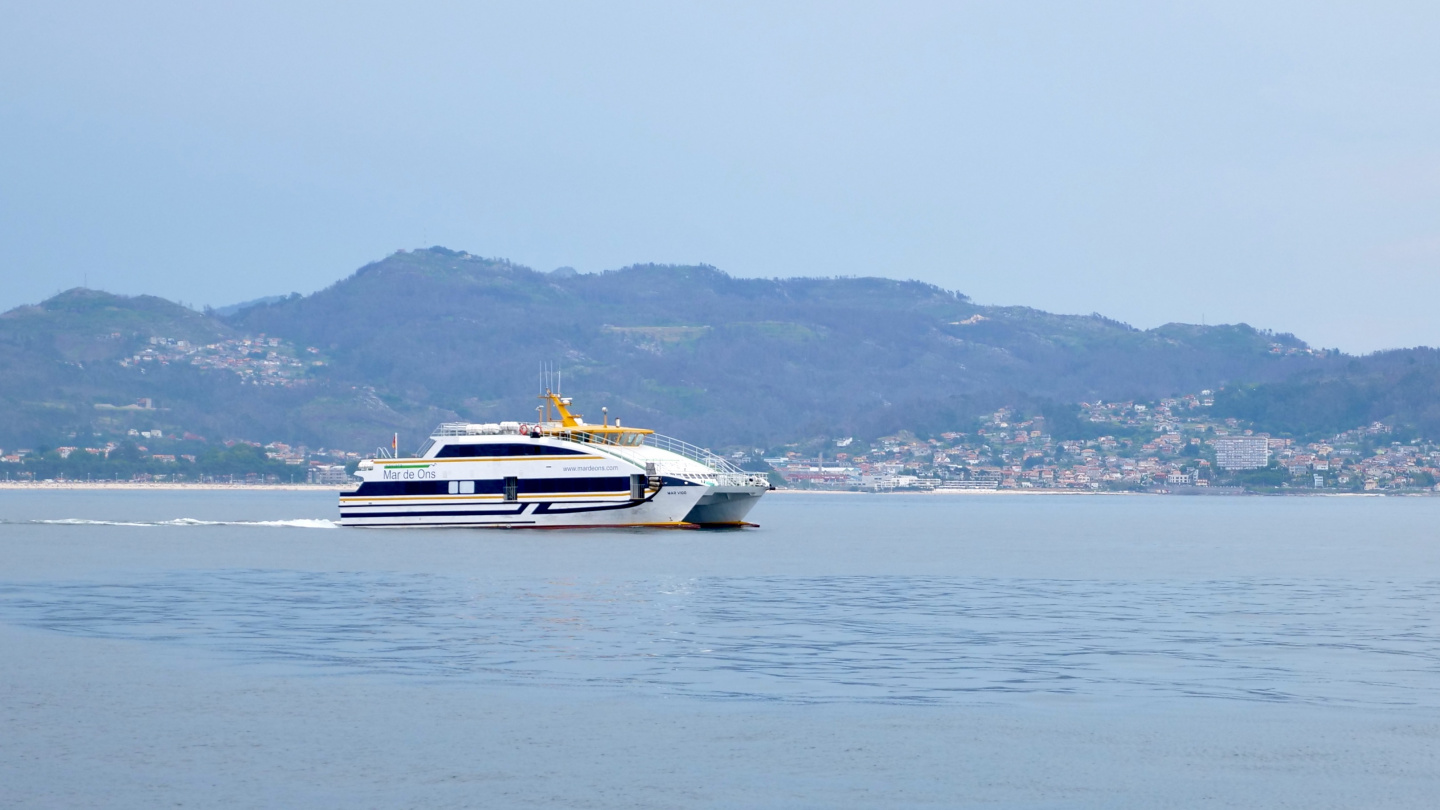
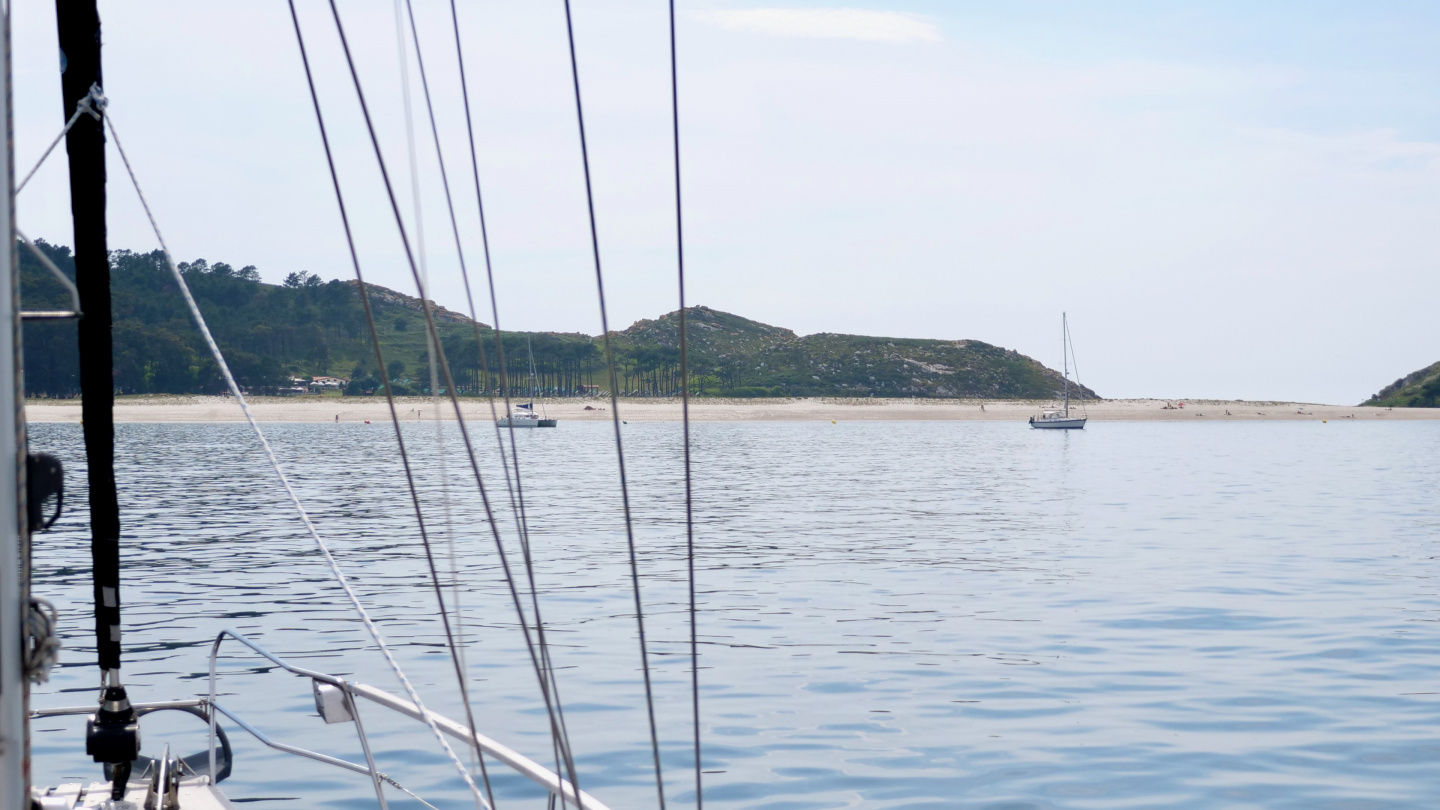
Anchoring is allowed on three different beaches: at the northeast corner of southern Illa de San Martiñon and on the southern and eastern side of the Illa do Faro. Faro and Monteagudo, the middle and the north islands, are linked by a long spit of sand shaped like a boomerang and the sandy beach on its eastern side, Praia das Rodas, was voted by the newspaper Guardian as the world’s best in 2007. This was where we aimed for and when we were arriving there were already several boats at anchor. We put the hook down in few different spots but a swell from the Atlantic was somehow entering to the bay and we were rolling quite a bit. Also the weather report was showing possibility of gusts up to 25 knots for the night. After pondering some time we came to conclusion that this bay on this day was not the perfect combination for spending a night. Thus we once more weighed the anchor and moved Suwena to the beach of Praia de Nosa Señora on the southern side of Faro. The location was beautiful and idyllic. As the Sun was setting we spent a quiet evening onboard and were impatiently looking forward for going ashore next day.
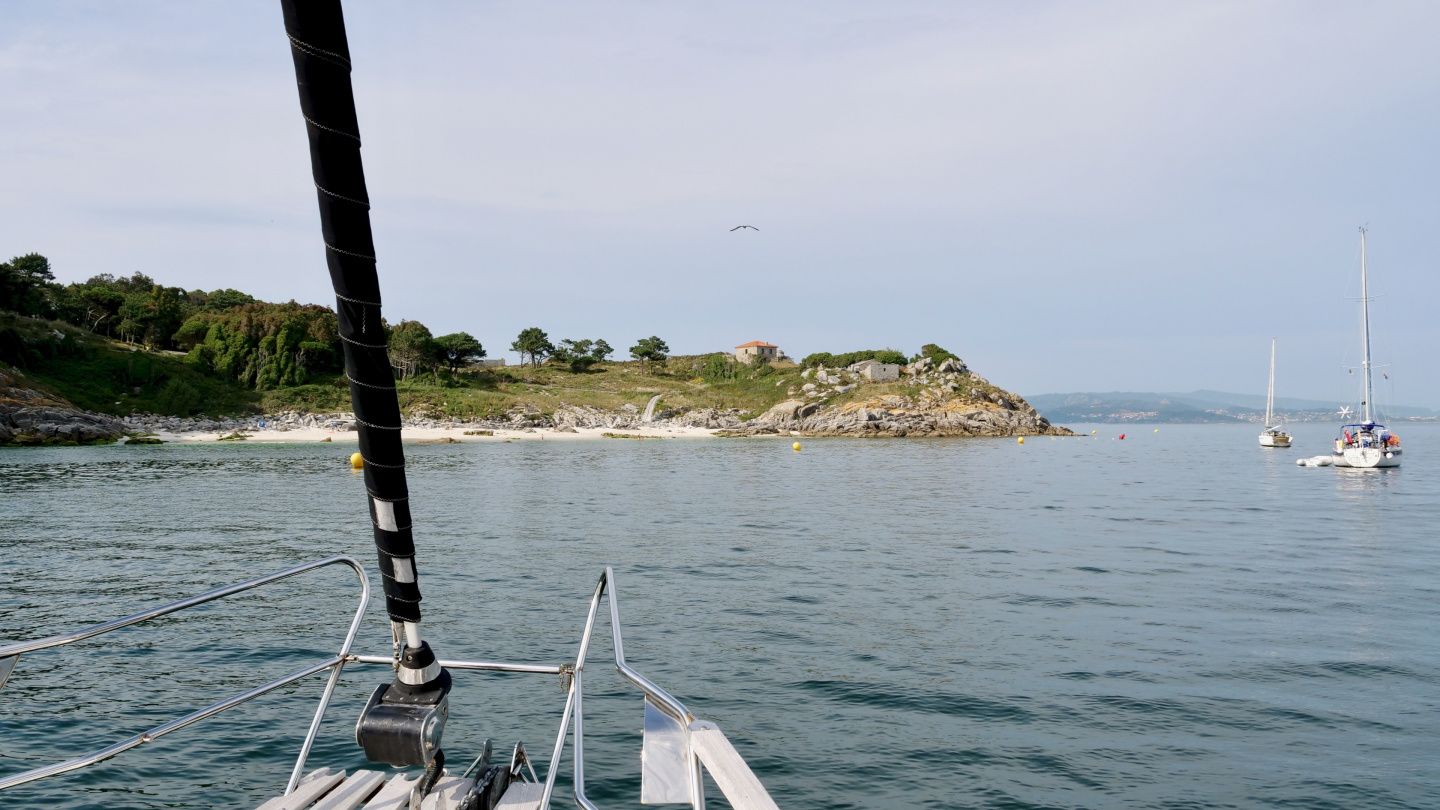
The wind picked up as forecasted but for some reason its direction was 180 degrees different from the forecast. For us this meant restless night in the rolling boat. The weather changes here fast and new forecast was promising the winds to stay for a couple of more days. Thus we made a new plan for the Midsummer and decided to sail into the bay of Pontevedra for having better shelter and return to Cíes when the weather improves.

